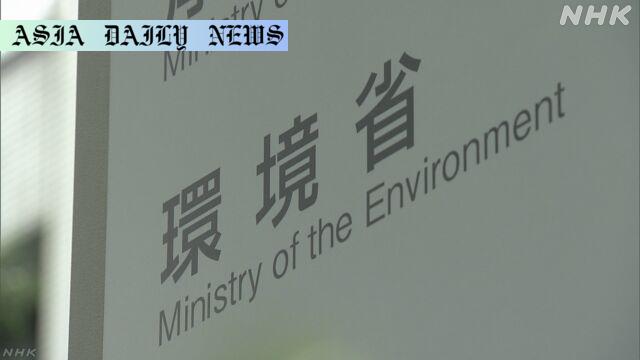Fukushima soil disposal: Japan explores solutions for radioactive soil, balancing volume, treatments, and public approvals.

Understanding the Fukushima Soil Disposal Challenge
The Fukushima Daiichi nuclear accident in 2011 left Japan facing a monumental challenge. Over 14 million cubic meters of soil contaminated with radioactive fallout were collected during decontamination efforts. Temporarily housed in an interim storage site, this vast quantity needs final disposal by 2045, as mandated by Japanese law. The process ensures both environmental safety and public health, spotlighting one of the nation’s most significant environmental undertakings. Addressing where and how this soil will be handled is critical for Japan’s future sustainability.
A Glimpse into the Proposed Options
Japan’s Environment Ministry has identified four strategic approaches for dealing with the contaminated soil. The core principle lies in balancing treatment comprehensiveness with resultant radioactive levels and land-space demands. Decisions also influence how other prefectures accept hosting final disposal sites.
Option 1: Extensive Treatment
The most comprehensive method involves intense treatment of the contaminated soil. This process could reduce the soil volume needing final disposal to fewer than 100,000 cubic meters. However, the trade-off is significantly higher concentrations of radioactive substances, reaching tens of millions of becquerels per kilogram. Such levels necessitate safe containment through embedding concrete and subterranean burial. Experts estimate only 3 hectares of land would be required, making this approach suitable for smaller-space constraints. Safety measures and technological execution, however, come with considerable costs and public scrutiny.
Option 2: Simplistic Treatment
On the other end of the spectrum is the simplest treatment option. This method avoids advanced processing, leaving up to 3.1 million cubic meters of soil needing storage. The radioactive content levels would be significantly lower at tens of thousands of becquerels per kilogram. Land requirements may rise to 50 hectares, but the broader safety margin might ease public opposition. Additionally, covering most of the soil with uncontaminated layers can reduce external risks, making this a promising mid-spectrum choice.
Looking Towards Hybrid Solutions
Considering economic constraints and public concerns, the government could blend these treatment options. By leveraging graded treatment levels based on soil contamination, the volume versus safety dynamic could be optimized, ensuring land-space efficiency alongside manageable public resistance. However, finalizing this solution requires national consensus and stringent regulatory oversight.
Government’s Next Steps
Japan’s government aims to solidify its disposal strategy by the start of the next fiscal year. Candidate sites across prefectures will be explored, considering each community’s willingness and infrastructure compatibility. Public communication will also prove pivotal, requiring transparent discussions on safety, compensatory measures, and ecological impacts.
The Broader Implications
This issue underscores the broader challenges associated with nuclear accident aftermaths. Despite advancements in technology, long-term radioactive waste management remains globally unresolved. Japan’s commitment to addressing its challenges serves as a potential model for other nations adapting to nuclear crises and their environmental echoes.
Conclusion
The final disposal of Fukushima’s radioactive soil symbolizes both a national challenge and an opportunity for innovative environmental management. As Japan progresses towards its mandated 2045 goal, the balance between reducing contamination risks, economic feasibility, and societal acceptance remains paramount. Engaging experts, collaborating with communities, and adopting environmentally sound technologies will determine the success of this endeavor.
Commentary
Significance of the Challenge
The Fukushima soil disposal issue presents a unique challenge for Japan and the global community. While managing 14 million cubic meters of radioactive material seems overwhelming, it also highlights the importance of preparedness and accountability in handling nuclear disaster aftermaths. Tackling this issue isn’t just about environmental safety; it’s also a test of public trust in governmental decision-making.
Balancing Technology and Public Concerns
One critical aspect of this plan is finding a balance between technological feasibility and public acceptance. While extensive treatment sounds like the safer option, its long-term implications and perceived risks could deter communities from supporting local disposal sites. On the other hand, simpler treatment, though less labor-intensive, requires significantly larger land areas, sparking a different type of public resistance.
The Need for Transparency
The Japanese government must prioritize transparency throughout this process. Clear communication about risks, safety protocols, and potential benefits can help communities understand the broader goals. Additionally, offering compensatory measures or involving local governments in the decision-making process might build trust and reduce opposition.
Global Implications
Japan’s handling of the Fukushima soil disposal challenge sets an important precedent for the entire world. Nuclear energy remains a controversial yet necessary field, and how nations manage waste determines public opinion and policy direction for decades. If Japan can execute this plan effectively, it could serve as an inspiring example of responsibility and innovation in crisis management.
Final Thoughts
In conclusion, the soil disposal issue at Fukushima is more than a local challenge—it’s a reminder of the global responsibilities tied to nuclear technology. If approached wisely, this moment can inspire innovations and collaborations crucial for a safer, more sustainable world.


